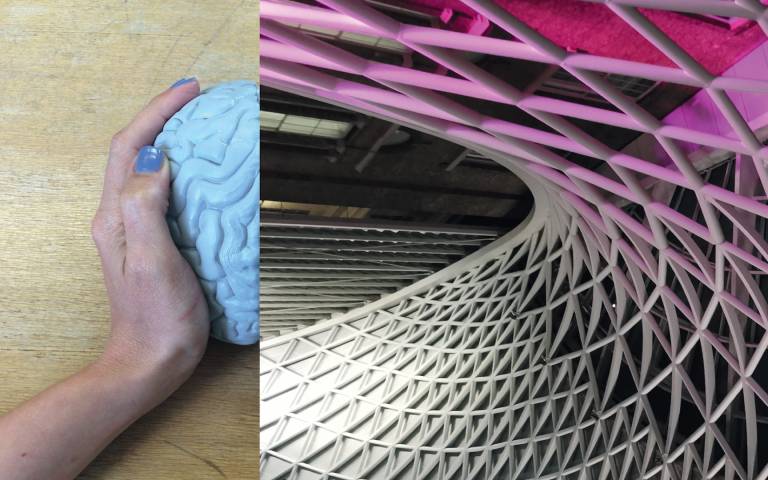Neuroformology: Architecture Meets Neuroscience
29 June 2022, 6:00 pm–7:30 pm

Celebrate this year’s London Festival of Architecture's theme ‘Act’ by discovering the new science of how architecture shapes our brains and behaviour.
Event Information
Open to
- All
Availability
- Yes
Organiser
-
The Bartlett School of Architecture
Location
-
UCL Here East AuditoriumUCL at Here East8-9 East Bay LaneLondonE15 2GW
The Bartlett School of Architecture is delighted to welcome Michaela Mitrovic to UCL Here East to speak about how architecture shapes our brains and behaviour to celebrate this year's London Festival of Architecture theme 'Act'.
The two main forces that drove human evolution are communication and action– throughout history, the social function brought rise to communities, the motor function created cities. To the human brain, the world itself– is a call for action. Moving around and doing things– the most rudimentary yet the most complex brain functions– are how we explore the environment, how we interact, and how we learn. Through building and designing the environment, we built ourselves. Consequently, everything we build and design should be a call for action.
Find out how architecture shapes our cognition, emotion, and finally, behaviour– in a talk by architect and brain scientist Michaela Mitrovic.
Speaker Biography
Mihaela Mitrovic is an engineer of architecture and a neuroscientist, a graduate of University of Oxford with graduate degrees in Aesthetics, Cognitive Science, Architecture and Urban Planning. She studies at King’s College London, University of Vienna, University of Ljubljana, and University of Novi Sad. After completing this degree as first in her generation and class, she obtained an Engineering Certificate and Licensed Architect status, RIBA II equivalent, allowing her to work in the field for three years. Spanning engineering, brain sciences, psychology, and neurophysiology, Mihaela’s work is highly interdisciplinary, and focuses on the very overlap of sciences and humanities, more specifically how the human mind interacts with art and the environment.
More Information:
Image: Mihaela Mitrovic
 Close
Close

